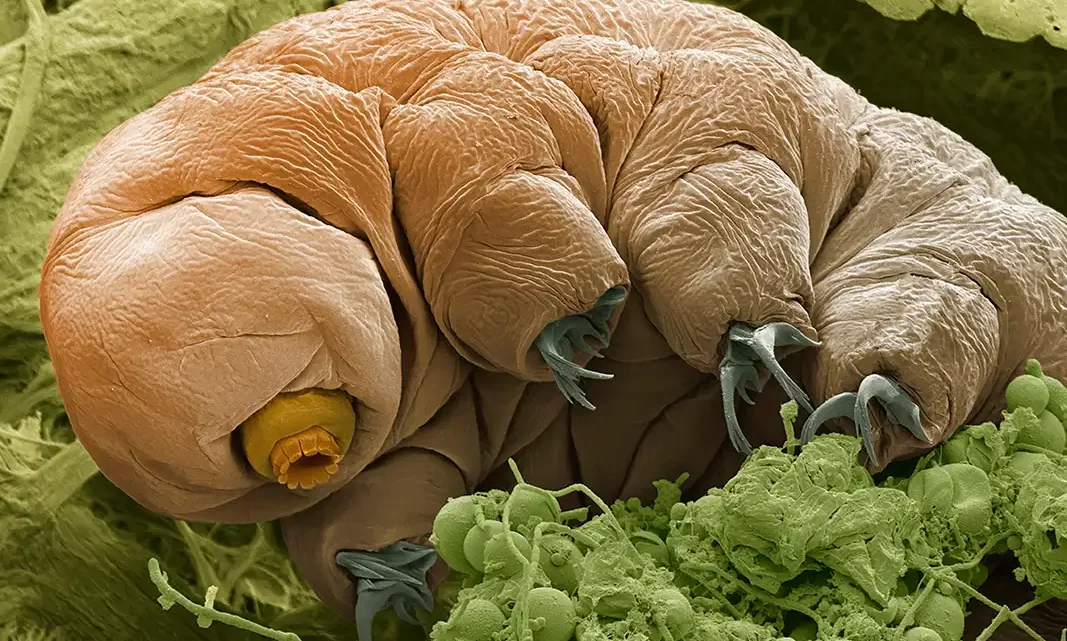
Decoding Tardigrade Superpowers: Ancient Transition Revealed in Evolutionary Tale of Resilience
February 5, 2024 Off By adminIn a scientific quest to unravel the mysteries behind the remarkable survival skills of tardigrades, researchers have delved into the complex evolutionary history of these microscopic creatures. Tardigrades, also known as ‘water bears’ or ‘moss piglets,’ are renowned for their resilience, surviving extreme conditions such as radiation, freezing, and desiccation.
The study, led by scientists at the University of Florida, sheds light on the intricate history of tardigrades’ adaptation to terrestrial environments. By identifying sequences from six gene families across 13 genera of tardigrades, the researchers constructed the first evolutionary trees for these groups, providing insights into the genes associated with their survival mechanisms.
Tardigrades, existing in diverse environments from deep ocean mud to rainforests, possess the unique ability of anhydrobiosis—a reversible metabolic halt upon almost complete desiccation. This capability is crucial for their resilience in various habitats.
While previous research identified genes linked to anhydrobiosis, this study aimed to uncover the broader evolutionary context of these genes. Surprisingly, the researchers found a complex network of independent gene duplications, challenging the initial expectation of clear groupings around ancient duplications.
The study suggests that tardigrades underwent two separate transitions from marine to terrestrial habitats in their evolutionary history—once in the ancestor of eutardigrades and once among heterotardigrades. This discovery adds layers of complexity to our understanding of tardigrade evolution and challenges simplified hypotheses.
James Fleming, a bioscientist at Keio University, expressed the excitement of uncovering this intricate network of gains and losses in gene duplications, emphasizing the need for further exploration. The researchers acknowledge the limitations of the study due to sparse data from some key tardigrade lineages, emphasizing the importance of ongoing large-scale sequencing initiatives.
As the scientific community continues to decode the secrets of tardigrades, these resilient microorganisms provide a fascinating glimpse into the complexity of evolutionary adaptations, showcasing their incredible journey from marine to terrestrial habitats.
Table of Contents
ToggleRelated posts:
![CRISPR-COVID-19]()
CRISPR-based Rapid COVID Diagnostics
news![Cutting-Edge Bioinformatics Techniques]()
Major Findings in Biosciences: October-November 2023
news![What-Is-Synthetic-Biology]()
Scientists Unearth 188 New CRISPR Systems, Revolutionizing Gene Editing Possibilities
CRISPR![longevity-drinking water]()
Quenching Your Thirst for Longevity: Water's Link to Healthy Aging
news![Unlocking Cellular Secrets: Team Discovers Protein Complex Activated by Faulty Gene Expression]()
Unlocking Cellular Secrets: Team Discovers Protein Complex Activated by Faulty Gene Expression
news![will bioinformatics replace by AI]()
Transforming Medical Coding: AI-Driven ICD-10 Solutions
A.I![Devin: The World's First Autonomous AI Software Engineer]()
Devin: The World's First Autonomous AI Software Engineer
A.I![bioinformatics-DNA, protein]()
The Microsecond Timescale Dynamics of HIV-1 Envelope Glycoprotein and Implications for Vaccine Desig...
news![Exploring Ancient Partnership Between Moss and Fungi Unveils Intriguing Dynamics]()
Exploring Ancient Partnership Between Moss and Fungi Unveils Intriguing Dynamics
news![spatialtranscriptomics]()
Novel CRISPR Technology Boosts Immune Recognition of Cancer Cells for Detection and Eradication
news![The Future of Personalized Medicine and Genomic Medicine: A 20-Year Vision]()
The Future of Personalized Medicine and Genomic Medicine: A 20-Year Vision
news![AI and bioinformatics]()
AI Tool Developed at Northwestern University Offers Personalized Breast Cancer Treatment Plans
news![eyes-AI]()
Transforming Diabetic Care: How AI-Powered Eye Tests Predict and Diagnose Diabetic Neuropathy
A.I![Superhero of the Cellular World: Talin Protein's Elastic Powers Unveiled]()
Superhero of the Cellular World: Talin Protein's Elastic Powers Unveiled
news![3Dstructureofprotein-deepmind]()
Scientists Develop AI Tool to Predict Protein Binding Sites
news![Personal genomics]()
World’s Largest Human Genome Database Unveils Complete Sequences for 500,000 Participants
news


















